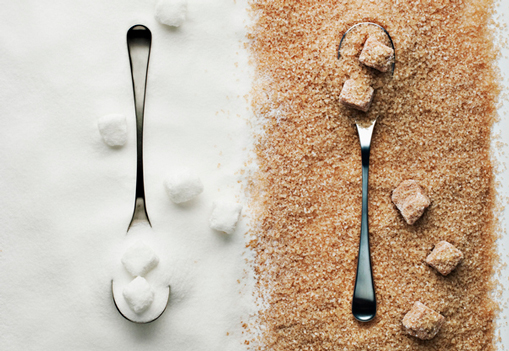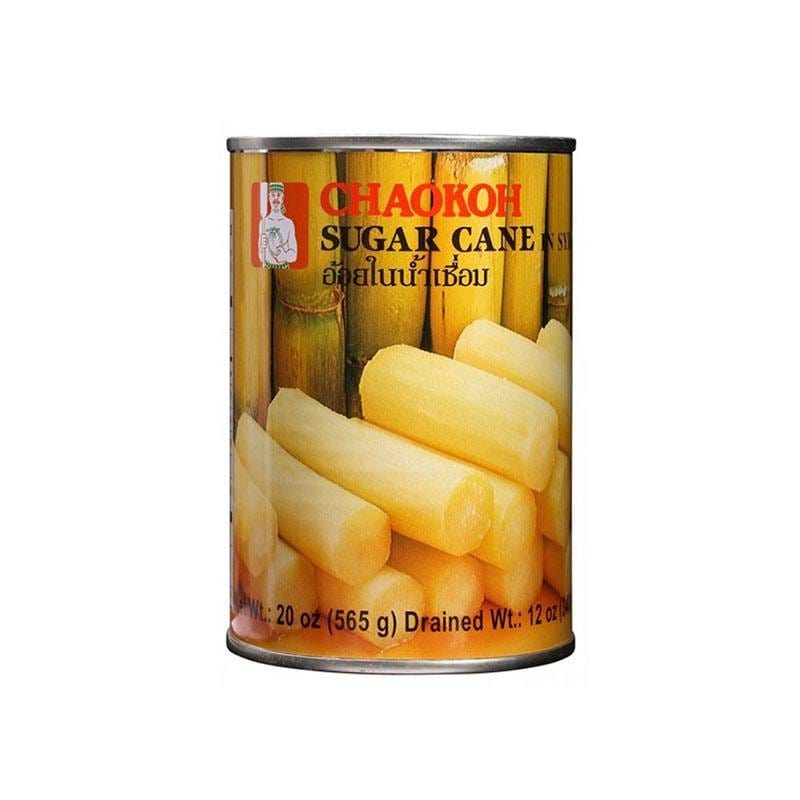Why Are sugar cane products So Versatile?
Wiki Article
Unveiling the Manufacturing Tricks Behind Sugar Cane and Its Diverse Series Of Products
The manufacturing journey of sugar cane is detailed and multi-faceted. It begins in the areas, where careful harvesting strategies set the phase for ideal sugar removal. The process includes numerous stages, consisting of juice removal and refining - sugar cane products. Sugar cane's potential expands much beyond plain sweetness. Technologies in handling and sustainable methods are improving its duty in modern sectors. What exists ahead for this versatile crop? The responses might surprise those curious about its futureThe Journey of Sugar Cane: From Field to Factory

As sugar cane persuades carefully in the exotic wind, it starts a transformative trip from area to factory. The vibrant environment-friendly stalks, abundant in sucrose, are cultivated under suitable problems, profiting from enough sunshine and rains. Farmers carefully monitor the growth, guaranteeing the plants reach their peak maturity, which is important for optimizing sugar content.Once grew, the cane is planned for harvesting, where its coarse structure holds the guarantee of pleasant items. The journey continues as the stalks are transferred to processing centers, where they undertake a collection of careful actions. At the manufacturing facility, the cane is cleaned, shredded, and pressed to extract the juice. This juice is then made clear and vaporized, paving the way for crystallization. Each phase of this journey is important, as it ultimately establishes the top quality of the sugar and other products originated from this functional crop.
Harvesting Techniques: The Primary Step in Production
Gathering sugar cane requires accuracy and ability, as the timing and technique straight affect the high quality of the end product. The process generally begins with establishing the excellent harvest, which is important; sugar web content peaks right before the plant gets to full maturity. Growers typically count on experience and farming indications to determine when to harvest.Two main techniques control the collecting landscape: guidebook and mechanical methods. Hands-on harvesting, though labor-intensive, permits cautious selection of stalks and lessens damage. Employees utilize machetes to reduce the cane near to the base, making certain the stalks continue to be intact for processing.Mechanical harvesting, on the various other hand, makes use of specific tools to cut and accumulate the cane swiftly. While this approach greatly raises effectiveness, it might cause higher degrees of debris and lower sugar material. Ultimately, the chosen method influences not only the quantity yet likewise the high quality of sugar cane supplied to processing facilities.The Extraction Process: Opening the Sweet taste
The removal process is crucial for transforming collected sugar cane into sweet juice. Numerous approaches of juice extraction can greatly influence the high quality and yield of the end product. Recognizing these techniques is necessary for taking full advantage of the advantages of sugar cane production.Gathering Methods Explained
Launching the sweet taste of sugar cane begins with accurate harvesting techniques that guarantee maximum yield and quality. The process normally involves cutting the cane at ground level, guaranteeing minimal damages to the plant and permitting regrowth. Farmers usually make use of machetes or specialized equipments, relying on the range of the procedure. Timing is crucial; gathering happens when the sugar web content reaches its peak, normally during completely dry periods. Furthermore, workers have to be trained to identify the very best stalks, preventing those that are also old or unhealthy. Efficient transport to refining centers is additionally crucial, as delays can bring about sugar degradation (sugar cane products). These meticulous strategies eventually lay the foundation for generating high-grade sugar and its varied byproductsJuice Removal Techniques
Juice extraction is a crucial action in changing sugar cane into its wonderful essence. This process commonly includes several approaches, each created to efficiently remove the sugary fluid from the fibrous stalks. One of the most typical strategy is milling, where the sugar cane is smashed between hefty rollers to release the juice. One more technique is diffusion, which utilizes warm water to dissolve the sugar from the cane fibers, making it a more reliable alternative for large-scale procedures. Additionally, some producers use screw presses, which use mechanical stress to essence juice. After extraction, the juice goes through explanation to eliminate impurities prior to further handling. Each method mirrors the industry's emphasis on taking full advantage of return and guaranteeing high-quality sugar production.Refining Sugar: Changing Raw Cane Into Granulated Gold
The refining process is necessary for transforming raw cane sugar right into the pure, granulated item customers acknowledge. sugar cane products. This involves a collection of extraction and filtering steps to get rid of impurities, followed by formation and drying strategies that enhance the sugar's high quality. Understanding these techniques exposes the detailed change from cane to the golden granules that sweeten many foods and drinksRemoval and Purification Process
An important phase in the sugar production journey involves the extraction and filtering of juice from newly gathered sugar cane. This procedure starts with squashing the cane to release its sweet juice, generally making use of big rollers or mills. The removed juice consists of not just sugar however additionally pollutants, including fibers and mud. To assure the juice is ideal for more refining, it undertakes a purification process. This entails passing the juice through various filters and clarifiers to eliminate solid particles and undesirable products. Chemicals such as lime might be included in help in the information procedure. The result is a clear, raw cane juice that works as the foundation for generating polished sugar, prepared for subsequent stages of processing.
Formation and Drying Out Methods
After the extraction and filtration procedures generate clear raw cane juice, the following step in sugar manufacturing is condensation. review This process includes boiling the juice to evaporate water, permitting sugar molecules to create crystals. As the liquid thickens, it gets to supersaturation, prompting sugar to take shape. The mixture is after that cooled down, promoting additional crystal development. Once formation is complete, the sugar crystals are separated from the continuing to be syrup through centrifugation.The last includes drying out, where the crystals are subjected to cozy air to eliminate residual dampness. This step is crucial, as it guarantees the product attains the desired granulation and rack stability. The result is pure, granulated sugar, prepared for product packaging and distribution.Beyond Sweet Taste: Diverse Products From Sugar Cane
While sugar cane is largely recognized for its wonderful taste, its flexibility extends far beyond plain sweet taste. This resilient plant functions as the source for a myriad of products that satisfy varied markets. Ethanol, acquired from sugar cane fermentation, plays an important duty in renewable energy, serving as a cleaner option to fossil gas. In addition, molasses, a result of sugar refining, is utilized in pet feed, along with in baking and fermentation processes.Sugar cane's fibrous residue, understood as bagasse, is not wasted; it is transformed into eco-friendly packaging materials and works as a biomass gas resource. Moreover, different sugars and syrups acquired from sugar cane find applications in the food and drink sector, adding to flavoring and preservation. The plant's leaves can be utilized for thatching, while its juice is consumed as a rejuvenating drink in many cultures. Subsequently, sugar cane exhibits farming capacity beyond its sugary credibility.Technologies in Sugar Cane Handling
As improvements in innovation proceed to improve various sectors, sugar cane processing is experiencing a significant improvement. Modern innovations, consisting of automated harvesting and precision agriculture, are boosting effectiveness and return. Drones and sensing units keep track of plant health, enabling farmers to optimize irrigation and nutrient application, inevitably increasing productivity.In handling facilities, advanced equipment and tools enhance operations. Advancements such as chemical processing and advanced filtering strategies enhance the removal of sugar while decreasing waste. Furthermore, the fostering of real-time data analytics makes it possible for manufacturers to keep an eye on procedures very closely, guaranteeing top quality control and reducing downtime.Biotechnology is also playing an essential role; genetic visit this page engineerings boost sugar cane's resistance to pests and environmental stressors. These improvements not just add to greater sugar yields however additionally help with the production of varied by-products from the cane, broadening its commercial applications. Overall, these innovations are leading the way for a more effective and sustainable sugar cane processing industry.The Future of Sugar Cane: Sustainability and Bioproducts
The future of sugar cane production is progressively linked with sustainability and the growth of bioproducts. As global demand for green choices increases, the sugar cane sector is pivoting in the direction of practices that decrease environmental effect. Innovations in farming techniques, such as precision agriculture and integrated insect monitoring, goal to boost return while minimizing resource consumption.Furthermore, sugar cane is being checked out as a raw material for biofuels, bioplastics, and other lasting products. These bioproducts not only supply an eco-friendly choice to standard fossil fuels and plastics but additionally add to a circular economic climate by utilizing waste materials.Research and growth in biotechnology are leading the method for boosted sugar cane selections that need much less water and fertilizers, further advertising sustainability. By accepting these developments, the sugar cane industry can safeguard its future while attending to vital environmental obstacles, demonstrating its potential as a keystone of sustainable growth.
Often Asked Inquiries
What Are the Environmental Influences of Sugar Cane Farming?
The environmental influences of sugar cane farming include logging, dirt deterioration, and water pollution. Furthermore, making use of pesticides can damage biodiversity, while monoculture practices lower community strength, positioning long-lasting sustainability challenges for agricultural practices.
Just How Does Sugar Cane Contrast to Various Other Sweeteners Nutritionally?
Sugar cane, rich in carbohydrates, offers energy but lacks crucial nutrients compared to alternatives like honey or maple syrup, which provide nutrients. Its high glycemic index additionally elevates problems over blood sugar level spikes.What Are the Wellness Conveniences of Consuming Sugar Cane Products?
The wellness advantages of consuming sugar cane items consist of enhanced food digestion, improved energy levels, and potential antioxidant homes. Additionally, they may sustain hydration and provide essential vitamins and minerals, adding favorably to this website general well-being.How Is Sugar Cane Waste Utilized After Handling?
After handling, sugar cane waste is used in various methods, consisting of biofuel manufacturing, pet feed, and natural plant foods. This sustainable technique minimizes environmental impact while optimizing resource efficiency within the sugar sector.What Are the Historic Origins of Sugar Cane Cultivation?

Report this wiki page